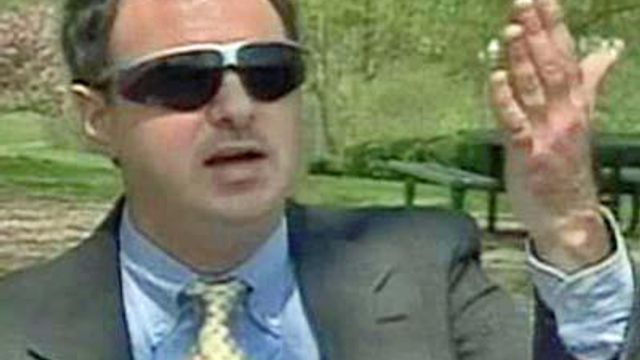Lasik eye surgery scrutinized
The government is taking a second look at Lasik eye surgery due to 140 patient complaints that the Food and Drug Administration has received in the past few years.
Posted — UpdatedAbout one in four of the 700,000 Americans who undergo the elective laser surgery each year is not a good candidate for it. A small fraction, perhaps 1 percent or fewer, suffer serious, life-changing side effects: worse vision, severe dry eye, glare, inability to drive at night.
Three men in Maryland are among those who say Lasik surgery damaged their vision.
"Now everything is slightly double. I see three moons at night," Dean Kantis said.
"If I look out my worst eye, it's totally hazed over," claimed Michael Patterson.
"I certainly regret having it," Roger Davis said. "It was the worst thing that happened to me."
In Lasik eye surgery, doctors use a laser to reshape the cornea. The surgery has given millions of patients 20/20 vision.
"I was 20/80 before today," said Lori Hill, who recently underwent Lasik eye surgery. "They told me it was 20/15, and it's just the day after surgery. It's been wonderful so far."
Officials for the Society of Eye Surgeons said they have a 95 percent satisfaction rate.
Most side effects are rare and temporary, said Dr. Michael Kelly, an ophthalmologist who performs Lasik surgery in Raleigh.
"You will see some glare and halos at night for maybe the first week or six weeks," Kelly said. "Complications that we've seen, we've been able to deal with."
Kelly said that not everyone with bad vision is a good candidate. "That's determined by their corneal thickness and determined by their amount of near-sightedness," he said.
Patterson, though, said that his doctor identified him as a good candidate.
"The only way to protect yourself from Lasik is not to have it," Patterson said.
After a public hearing Friday, FDA advisers recommended that the agency make clearer the warnings it already provides for would-be Lasik patients:
- Add photographs that illustrate what people suffering certain side effects actually see, such as the glare that can make oncoming headlights a huge "starburst" of light.
- Clarify how often patients suffer different side effects, such as dry eye. Some eye surgeons say 31 percent of Lasik patients have some degree of dry eye before surgery, and it worsens for about 5 percent afterward. Other studies say 48 percent of Lasik recipients suffer some degree of dry eye months later.
- Make more understandable the conditions that should disqualify someone from Lasik, such as large pupils or severe nearsightedness.
- Spell out that anyone whose nearsightedness is fixed by Lasik is guaranteed to need reading glasses in middle age, something that might not be needed if they skip Lasik.
The FDA is pairing with eye surgeons to begin a major study next year to better understand which Lasik-surgery patients have bad outcomes.
• Credits
Copyright 2024 by WRAL.com and the Associated Press. All rights reserved. This material may not be published, broadcast, rewritten or redistributed.





